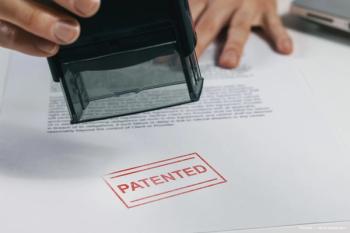
Aberrometer aims to improve refractive, cataract outcomes
A Talbot-Moiré wavefront aberrometer developed for use during cataract surgery is being investigated for its potential to enhance the accuracy of astigmatic correction with limbal relaxing incisions, toric IOL alignment, and IOL power selection.
Key Points
The device is being investigated in a multicenter trial under way at eight clinical sites. It is being used for real-time measurement of residual cylinder after limbal relaxing incisions, to enable accurate alignment of toric IOLs, and for aphakic refraction to reduce prediction error in IOL power calculations in eyes with complications.
"Today's cataract surgery patients are demanding the best possible vision, but available outcomes data show there is room for improvement. In one study, postoperative spherical equivalent [SE] was within 1 D of predicted in 85% of cataract surgery patients and within 0.5 D in only 55%," Dr. Stahl said.
The new wavefront aberrometer has a compact configuration that allows it to fit directly under the surgical microscope. Intraoperative measurement of sphere, cylinder, and axis adds less than 30 seconds to the procedure, and the device also analyzes higher-order aberrations.
The system uses Talbot-Moiré interferometry, which involves a different principle than the technology found on other commercially available wavefront aberrometers. Similar to other aberrometers, laser light is projected into the eye and the aberrated wavefront that emerges passes first through relay lenses. Instead of continuing on through a lenslet array, however, the light is transmitted through a pair of Ronchi gratings that are separated by one Talbot plane. That grating pair creates a fringe pattern that goes through a focusing lens, lands on a charge-coupled device camera, and is translated into the refractive state of the eye.
The investigational aberrometer has an inherent dynamic range of –15 to +25 D, which is larger than that of existing office aberrometry units and allows evaluation of a wide range of eyes, from those with high myopia to aphakia. The device has a resolution of <0.1 D.
Refractive output
With an interest in validating the performance of the new wavefront device, Dr. Stahl and Daniel S. Durrie, MD, who is in private practice at Durrie Vision Center, Overland Park, KS, compared its refractive output with that provided by commercially available wavefront aberrometers.
"We faced a challenge in deciding how to evaluate this new system," Dr. Stahl said. "We needed to assess its measurements based on comparable data, but there are no currently available methods for comparing wavefront data."
The validation study enrolled 50 eyes of 25 patients that all were assessed using the new wavefront system and four other systems available at the practice site: a wavefront aberrometer (LadarWave, Alcon Laboratories), ray-tracing aberrometer (iTrace, Tracey Technologies), high-definition precision aberrometer (COAS-HD [complete ophthalmic analysis system], Advanced Medical Optics), and wavefront-guided system (Allegro Analyzer, Alcon Laboratories). Only eyes with up to 5 D of cylinder were included.
Among all the systems, a strong correlation existed between the aberrometry-measured sphere and cycloplegic sphere as well as with SE measurements. Results for sphere, cylinder, and SE also were similar across all devices.
"In analyses of reproducibility of sphere, cylinder, and axis, and of standard deviation, the [new wavefront] system compared well with the commercially available systems," she concluded.
Newsletter
Don’t miss out—get Ophthalmology Times updates on the latest clinical advancements and expert interviews, straight to your inbox.


















































.png)


